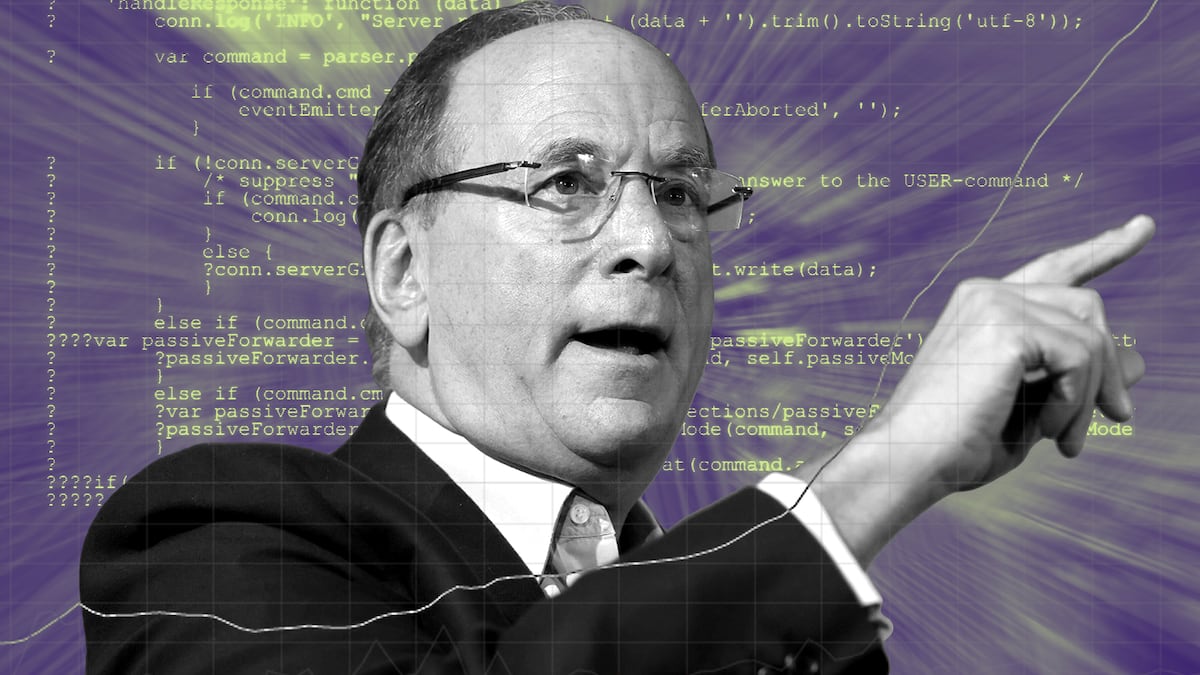- The US leads the worldwide crypto market for now, but that may change.
- Regulatory uncertainty threatens to see billion-dollar businesses look for friendlier regions.
- The country lagging behind in real-world asset tokenisation is the latest example of this, market stakeholders warn.
- But all is not lost as big firms still experiment with the idea.
BlackRock CEO Larry Fink has called tokenisation — the digital representation of assets so they can be tracked on blockchains — the “next generation of markets.” Major banks like Citigroup and HSBC are launching tokenisation products and issuing tokenised bonds.
But the US is at risk of falling behind the European Union due to regulatory uncertainty, potentially missing out on a market due to hit $5.6 billion by 2026, according to research from Markets and Markets.
“It’s pretty evident that Europe and other geographies are moving substantially quicker than the US,” Nicholas Garcia, co-founder and CEO at tokenisation protocol Fortunafi, said during a webinar hosted by Luxembourg for Finance.
“More and more locations are creating effective frameworks for tokenised securities.”
His statement echoes stern warnings from US crypto campaigners, chieftains, and lawmakers that a lack of meaningful laws to regulate the industry will see promising players move to other countries, taking their jobs and money with them.
While 2023 has seen the US Congress roll out two crypto bills, those efforts may slow down due to events like the criminal trial against FTX founder Sam Bankman-Fried, and the war in Israel and Palestine.
Meanwhile, the European Commission has rolled out its own tailored framework — the Markets in Crypto Assets regulation — and a regulatory sandbox where financial firms can trial tokenised assets trading.
Tailored regulation
Crypto promoters are punting the tokenisation of securities like government bonds as an emerging use case for blockchain technology.
Tokenisation has caught the imagination of companies wanting to market blockchain tech to big banks, which see it as a way to modernise their creaking infrastructure.
MiCA, the regulatory sandbox and individual European countries like Luxembourg and Switzerland have rolled out regulation to enable tokenised securities trading, meaning that Europe is armed with rules tailored to these instruments.
In the US, there are existing legal avenues that firms can take for tokenising securities, but they’re not specially designed to enable it, Garcia said.
“In Europe, you’re seeing a lot more direct tokenisation of the underlying asset. So the token represents a ticker —- that’s the way the regulation is being allowed, and how it’s scaling,” he said.
“In the US, you don’t have these new regulations, you have to fit into the existing framework.”
Nevertheless, a who’s who of US firms has leveraged rules intended for private funds and is experimenting with tokenisation.
Garcia cited the example of Franklin Templeton, which has issued a $300-million money market fund on public blockchains including Stellar and Polygon. The fund uses the blockchain to process transactions and record ownership.
“Pretty much every single institution, from Citibank to JPMorgan to Bank of America are all looking at this actively, and are close to launching products,” Garcia said.
“Many of them have products that are interbank and live — there’s quite a bit of volume in interbank activity, and that is going to scale even more to permissionless blockchain.”
Tokenisation underwhelming so far
A small wave of bond issuances from banks including Societe Generale in around 2019 has so far proved underwhelming.
A report from consultancy Opimas earlier this year found that blockchain issuance levels are low and trading volumes virtually non-existent, with bonds trading back and forth among a small number of participants.
Decentralised finance purists say the disruptive potential of the blockchain is neutralised, as banks only use the tech for a small part of the lifecycle of the bond, with most operations remaining on traditional systems.
Garcia said, however, that while a first round of experimentation ultimately failed, the technology is improving and banks are becoming more comfortable with issuing tokenised securities on public chains.
“There was an initial attempt to bring these assets on-chain that ultimately failed,” he said. “There wasn’t the correct infrastructure. It was really just Ethereum back then, and there wasn’t this proliferation of stablecoins and decentralised finance that you see today.”
“We’re seeing there are numerous layer 1s and layer 2s, and numerous decentralised applications built on those that are looking to drive new and enhanced use cases.”
Protocols including MakerDAO and Aave, for example, are tailoring their platforms for compatibility with tokenised assets.
Garcia mentioned “DeFi summer, which was an early growth of users and activity in decentralised finance,” Garcia said.
“There’s going to be a next phase of that using RWAs or tokenised securities, whatever you want to call them, as base collateral within these protocols to start earning a significant amount of yield.”
If the US wants to be part of that, then it needs to change its laws for the concept to take hold and find significant secondary market liquidity.
“I do think things will change over the next few years. There needs to be some shifts in government, and we’re having elections next year. So we’ll hopefully see some improvements,” Garcia said.
Do you want to talk tokenisation? Contact me at joanna@dlnews.com or on Telegram @joannallama.
